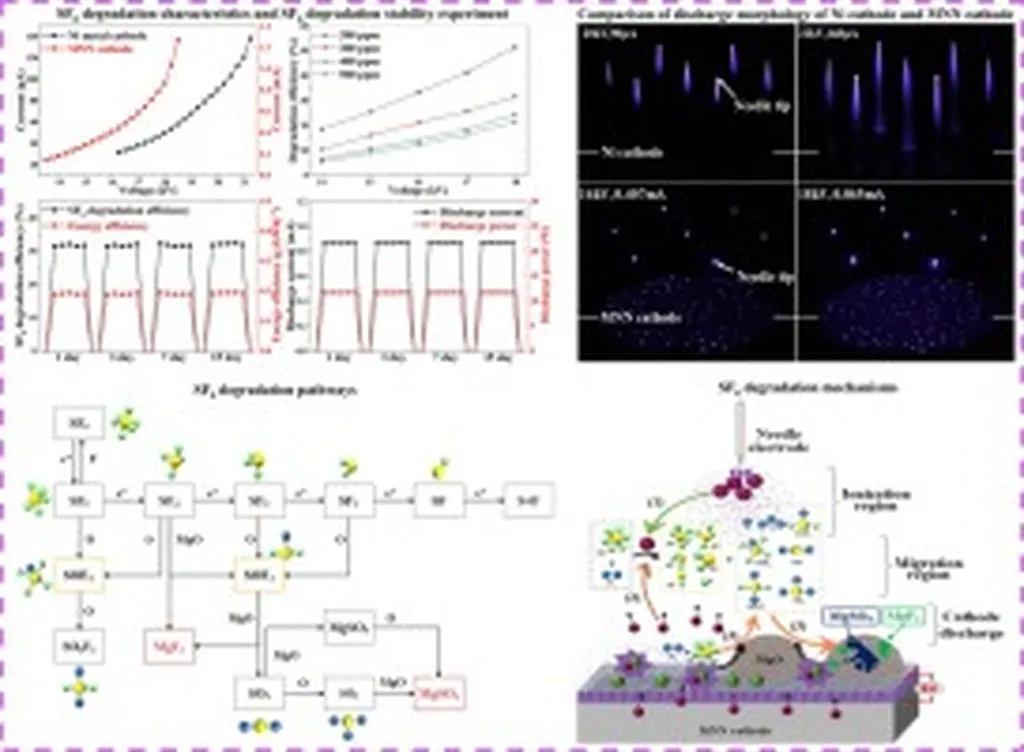In the quest to make the energy sector more sustainable, researchers are turning to innovative solutions that can mitigate the environmental impact of certain technologies. A recent study published in the American Chemical Society’s journal, ACS Omega, offers a promising approach to degrading sulfur hexafluoride (SF6), a potent greenhouse gas widely used in the electrical industry. The research, led by Chi Zhang from the Electric Power Research Institute at State Grid Hubei Electric Power Corporation Limited in Wuhan, China, explores the use of a dual-stage dielectric barrier discharge (DBD) plasma reactor packed with ZnO/γ-Al2O3 catalyst to break down SF6 effectively.
SF6 is a highly effective insulating gas used in high-voltage electrical equipment, but it is also one of the most potent greenhouse gases, with a global warming potential thousands of times greater than carbon dioxide. The ability to degrade SF6 efficiently could significantly reduce its environmental footprint. The study by Zhang and his team focuses on enhancing the degradation process using a combination of plasma technology and catalytic materials.
The dual-stage DBD plasma reactor employed in this research utilizes a high-voltage electrical discharge to create plasma, which initiates the breakdown of SF6 molecules. The addition of ZnO/γ-Al2O3 catalyst packing further enhances the degradation process by providing active sites for the chemical reactions. “The combination of plasma and catalytic materials allows for a more efficient and complete degradation of SF6,” explained Chi Zhang. “This approach not only reduces the concentration of SF6 but also converts it into less harmful byproducts.”
The implications of this research for the energy sector are substantial. As the demand for high-voltage electrical equipment continues to grow, so does the use of SF6. Developing methods to degrade SF6 effectively can help mitigate its environmental impact while ensuring the continued reliability of electrical infrastructure. “This technology has the potential to be integrated into existing systems, providing a sustainable solution for the energy industry,” added Zhang.
The study’s findings suggest that the use of ZnO/γ-Al2O3 catalyst packing in a dual-stage DBD plasma reactor can significantly improve the degradation efficiency of SF6. This research opens new avenues for developing more environmentally friendly practices in the energy sector. As the world transitions towards cleaner energy solutions, innovations like this are crucial for reducing the environmental impact of essential technologies.
The research published in ACS Omega, which translates to the American Chemical Society’s journal of broad scope, highlights the importance of interdisciplinary approaches in addressing environmental challenges. By combining plasma technology and catalytic materials, Zhang and his team have demonstrated a promising method for degrading SF6, paving the way for more sustainable practices in the energy industry. As the energy sector continues to evolve, such innovations will play a pivotal role in shaping a greener future.

